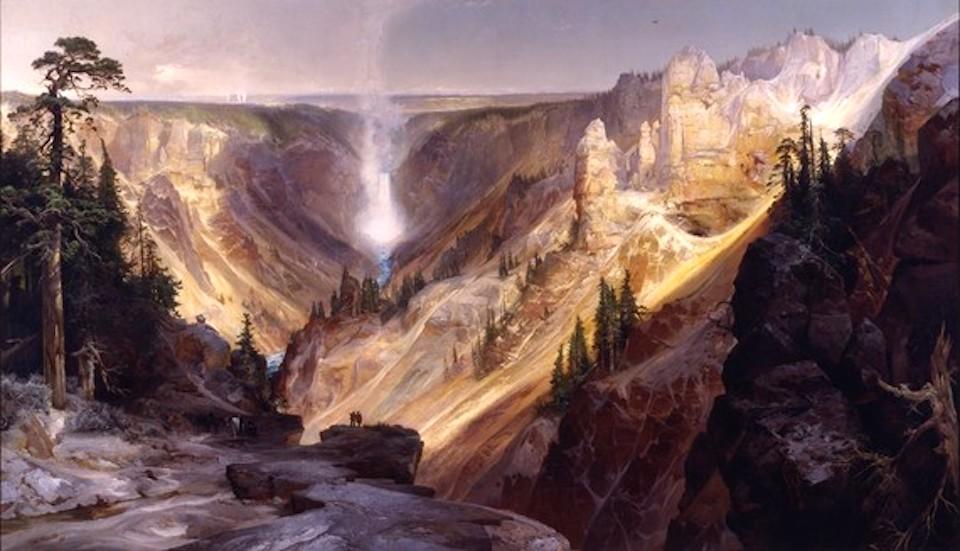
Thomas Moran painted this setting of the Grand Canyon of Yellowstone in 1872/DOI
Two iconic paintings by Thomas Moran, one of which helped convince Congress to establish Yellowstone National Park, are returning to the Interior Department's museum later this year.
“Moran’s magnificent 19th century works illustrate the breathtaking natural beauty of the American West, serving as a reminder of the Department of the Interior’s humbling responsibility to preserve these vistas for the American people," said Interior Secretary David Bernhardt in announcing the paintings' return. “We are eager to welcome these paintings back to Interior headquarters, where all who visit the newly-expanded Interior Museum can appreciate firsthand works so central to our department’s mission and identity.”
The “Grand Canyon of the Yellowstone” (1872) and “Chasm of the Colorado” (1873–1874) are large-scale canvases each measuring 7 feet high by 12 feet wide. These iconic landscapes capture the grandeur of the American West and are uniquely tied to the history of the Interior Department.
Thomas Moran based both works on sketches made while accompanying government-sponsored expeditions of these respective regions in 1871 and 1873. Moran’s captivating depictions of Yellowstone’s natural wonders were credited with influencing lawmakers to preserve Yellowstone in 1872 as the country’s first national park.
“We are excited about this homecoming and are so pleased to be extending this legacy,” said Diana Warring, the museum director. “Just as Thomas Moran’s paintings framed many people’s visions of the West in the 1870s, we look forward to framing the discussion for 21st-century audiences through our upcoming exhibition, programming about public lands and the 150th anniversary of Yellowstone in 2022.”
Congress ultimately purchased the two paintings from the artist, and they hung prominently in the U.S. Capitol for more than a half-century. Subsequent renovations to the building meant that the works could no longer be accommodated due to their size, so in 1950, President Harry Truman signed Public Law 81-603 transferring the paintings to the permanent custody of the Department of the Interior for display.
Although the Moran paintings were last exhibited at the Interior Museum in 1999 for the department’s 150th anniversary, they have always remained highly visible. Over the years the paintings have appeared—either individually or together—in major exhibitions at museums throughout the country. Since 2000, the pieces have been on loan for display at both the Smithsonian American Art Museum and its Renwick Gallery.
The Interior Museum has been undertaking an expansion project with new gallery space to open in September 2020, which will include these two paintings.



Comments
This is good news. They are magnificent works of art and should be inspiring to DOI staff.
Can the public visit the Interior Museum?
Yes it can, Larry.